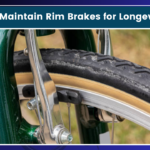Hey there, fellow bike enthusiasts! It’s been a long day at work, and I’m looking forward to unwinding with some writing. Before I dive in, let me grab a quick snack – I’ve got some leftover pizza calling my name. Alright, I’m back and ready to share some knowledge about bike cable replacement.
Whether you’re a seasoned cyclist or a casual rider, understanding how to replace your bike cables is an essential skill that can save you time, money, and frustration. In this article, I’ll walk you through the process of replacing both brake and gear cables, share some tips and tricks I’ve learned over the years, and hopefully make the whole experience a bit less daunting.
Why Replace Your Bike Cables?
Before we get into the nitty-gritty, let’s talk about why you might need to replace your bike cables in the first place. Over time, cables can stretch, fray, or become contaminated with dirt and grime. This can lead to poor performance, whether it’s sluggish shifting or weak braking power. Regular maintenance, including cable replacement, keeps your bike running smoothly and safely.
Signs that it’s time for a cable change include:
- Frayed or visibly damaged cables
- Sticky or inconsistent shifting
- Reduced braking power
- Visible rust or corrosion
- Cables that feel stretched or loose
Tools and Materials You’ll Need
Hold on a second – my cat just jumped on my lap. She always seems to know when I’m trying to concentrate! Okay, where was I? Right, tools and materials. Before you start, make sure you have the following on hand:
- New brake and/or gear cables
- Cable housing (if replacing)
- Wire cutters
- Allen keys (hex wrenches)
- Screwdrivers (flathead and Phillips)
- Needle-nose pliers
- Cable end caps
- Grease or lubricant
- A clean work area and good lighting

Replacing Brake Cables
Let’s start with brake cables since they’re usually a bit simpler. Here’s a step-by-step guide:
- Loosen the brake: Start by loosening the brake caliper to create some slack in the cable. This usually involves turning a small barrel adjuster or loosening a bolt.
- Disconnect the old cable: Find where the cable connects to the brake lever and carefully unhook it. You might need to use pliers to pull the cable end through a small hole.
- Remove the old cable: Slide the cable out of the housing. If you’re replacing the housing too, remove it from the frame.
- Install new housing (if needed): If you’re replacing the housing, cut it to the appropriate length and insert it into the frame, making sure it follows the same path as the old housing.
- Thread the new cable: Feed the new cable through the lever, then through the housing. Make sure it’s seated properly in the lever mechanism.
- Reconnect and adjust: Reattach the cable to the brake caliper, pull it taut, and tighten the pinch bolt. Adjust the tension using the barrel adjuster until the brake pads are close to the rim but not touching it.
- Test and fine-tune: Squeeze the brake lever to test the tension. Adjust as needed until you have a firm, responsive feel.
- Trim and cap: Cut off any excess cable, leaving about 2 inches beyond the pinch bolt. Crimp on a cable end cap to prevent fraying.
Whew! That was a bit of a process, wasn’t it? I’m going to take a quick break to stretch my legs and refill my water bottle. Be right back!
Replacing Gear Cables
Alright, I’m back and ready to tackle gear cables. These can be a bit trickier, but don’t worry – we’ll get through it together. Here’s how to replace your gear cables:
- Shift to the smallest cog: This releases tension on the cable, making it easier to remove.
- Locate the cable anchor: Find where the cable attaches to the derailleur and loosen the anchor bolt.
- Disconnect from the shifter: Like with the brake cable, you’ll need to detach the cable from the shifter mechanism. This might require removing a cover or panel.
- Remove the old cable: Carefully pull the cable out of the housing and frame.
- Install new housing (if needed): If you’re replacing the housing, cut it to size and install it, following the same routing as the old housing.
- Thread the new cable: Feed the new cable through the shifter, then through the housing and any cable stops on the frame.
- Reconnect and adjust: Attach the cable to the derailleur, pull it taut, and tighten the anchor bolt. Don’t overtighten – you’ll need some adjustability.
- Set the limits: Adjust the high and low limit screws on the derailleur to ensure it can’t shift beyond the largest or smallest cog.
- Fine-tune shifting: Use the barrel adjuster to fine-tune the cable tension. Shift through all the gears, making small adjustments until shifting is smooth in both directions.
- Trim and cap: As with the brake cable, trim the excess and add a cable end cap.

Tips and Tricks
Now that we’ve covered the basics, let me share some tips I’ve picked up over the years:
- Quality matters: Invest in good-quality cables and housing. They’ll last longer and perform better.
- Lubricate sparingly: A light coating of grease on the cables can help them slide smoothly, but don’t overdo it – too much grease can attract dirt.
- Check your routing: Make sure your new cables follow the same path as the old ones. Improper routing can lead to poor performance and premature wear.
- Replace in pairs: If you’re replacing one brake cable, consider doing both sides for consistent performance.
- Keep old cables: Save your old cables as emergency spares for trailside repairs.
- Take your time: This isn’t a race. Go slowly and double-check your work at each step.
- Practice makes perfect: If you’re new to this, consider practicing on an old bike first.
Troubleshooting Common Issues
Even with careful installation, you might encounter some issues. Here are a few common problems and how to solve them:
- Shifting problems: If your gears aren’t shifting smoothly, check that the cable is properly seated in the shifter and derailleur. Then, fine-tune the tension using the barrel adjuster.
- Brake squealing could be due to contaminated brake pads or improper toe-in. Clean your rims and pads, and adjust the brake pad angle if needed.
- Cable friction: If your cables feel sticky or resistant, check for any tight bends in the housing or areas where the cable might be rubbing against the frame.
- Rapid cable wear: If you find yourself replacing cables frequently, look for any sharp edges or burrs along the cable route that might be causing excessive wear.
Maintaining Your New Cables
To keep your newly installed cables performing well, follow these maintenance tips:
- Clean regularly: Wipe down your cables and housing to prevent dirt buildup.
- Inspect often: Check for any wear, fraying, or corrosion.
- Lubricate occasionally: A drop of light oil on the exposed cable can help prevent rust.
- Adjust as needed: Cables can stretch over time, so be prepared to make minor adjustments.
Wrapping Up
Well, folks, we’ve covered a lot of ground here. Replacing bike cables might seem daunting at first, but with practice, it becomes second nature. Remember, taking care of your bike is all part of the cycling experience – it’s not just about the ride, but also about understanding and maintaining your trusty two-wheeled companion.
Oh, would you look at the time? I’ve been so engrossed in writing this that I almost forgot about dinner plans with friends. I hope this guide helps you tackle your next cable replacement with confidence. Happy riding, and may your shifts be smooth and your stops be strong!
Before I head out, let me know if you have any questions. I’m always happy to help fellow cyclists keep their bikes in top shape. Now, if you’ll excuse me, I need to change out of my comfy writing clothes and get ready for dinner. Ride safe, everyone!










